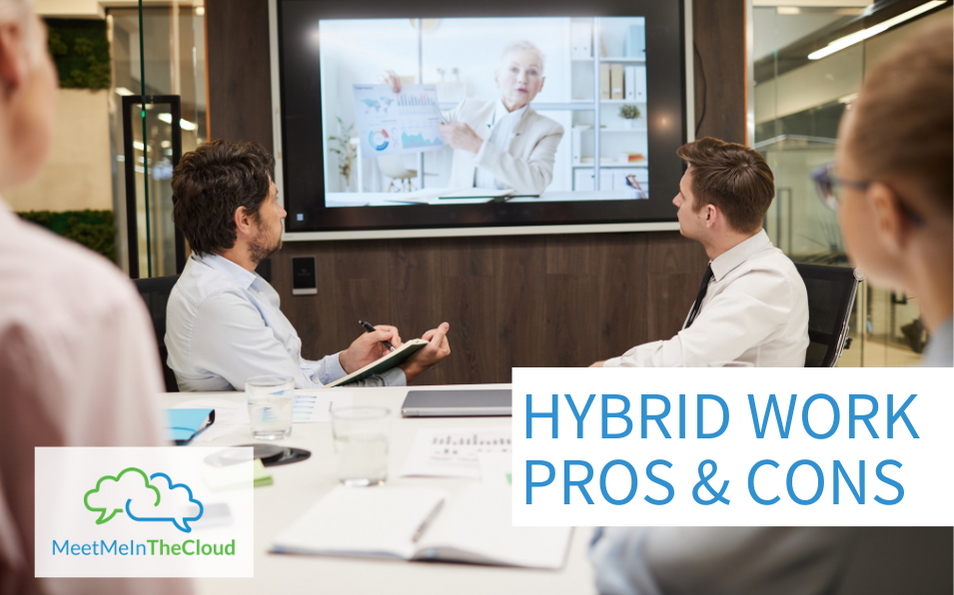Hybrid work is an interesting concept that sits on a spectrum ranging from 99% remote work, to a multitude of part in-house and part remote work variations, to 99% in-office operations. Let’s go through some hybrid work pros and cons.
Pro: Swapping Efficiency for Productivity
Performance has been a hot topic since the COVID-19 pandemic hit. And this means re-evaluating how we measure it. 75% of remote workers were equally or more productive during the pandemic, according to Owl Labs.
In the past, efficiency was the golden metric – the goal was to have as many people in the office as possible, clocking hours and striving to maximize efficiency. The problem with this system is that it now has the feel of an assembly line – while the job was clearly laid out, but each person on the line is unique, some are faster or better at certain tasks than others.
By shifting focus to productivity over efficiency, it forces teams to be more intentional in the roles and duties that are assigned to each member, while leaving the execution up to personal preference. When your employees are doing things in the way that suits them best, they are often more productive – even during hybrid work.
Con: Cybersecurity is More Difficult to Maintain
When everyone is working in different environments, with different equipment and technology, cybersecurity becomes much harder to maintain. While the employees who are engaging in risky behavior from their remote workstations were likely also engaging in that behavior at work, they were all being housed on the same networks and servers that you and your business could maintain and control.
However, this is an issue that can be improved – with good training and frequent reminders, you can mitigate cybersecurity risks in the hybrid work model.
Pro: Collaboration is Increasing
While it is arguably less difficult to collaborate when everyone is in the same physical space, new technologies are revolutionizing how and when we work together. This new hybrid model is creating pathways for not just more communication, but better communication. With such a large variety of collaboration media – file sharing, video conferencing, team chats, and more – teams are now getting to choose the best avenues and skip the drudgery that comes with those “this meeting should’ve been an email” incidents.
And this collaboration is leading to more one-on-one meetings between managers and staff, allowing for better understanding on both sides of the goals and initiatives each staff member is working towards.
Con: Employees Are Feeling More Isolated
One of the biggest cons of the hybrid workforce is the increased feelings of isolation in employees. While it is entirely possible to feel isolated even in a warehouse full of cubicles, being in the same physical space as your coworkers offers a shared experience that is then discussed over coffee breaks, lunch, or corporate events.
With technology taking the place of face-to-face conversations, it’s important to check in often with your teams to make sure they are getting quality non-work-related conversations and interactions throughout their workdays as well.
Pro: Reduced Overhead Cost
A strong pro for the hybrid workforce is cost-efficiency. Overhead costs for businesses pertaining to things like rent, utilities, food, and taxes have dropped drastically.
When transitioning to a more balanced hybrid model, business leaders will have the opportunity to maximize the efficiency of their owned and rented spaces – for example, practices like desk-sharing (where multiple people work from the same desk on different days), can nearly halve the costs associated with maintaining a space for 100% of your employees.
Con: Productivity is Higher Overall, But More Difficult to Maintain
The office system was set up to decrease distractions during the workday. But much like the advent of smartphones has a complex relationship with productivity (employees could be checking social media or taking personal calls while clocked in at work, but they are also using their phones to answer emails and calls related to work even during non-work hours), giving employees more agency in their remote schedules and setups can cause big distractions.
This is an issue that will likely see a shift toward a more neutral position in 2021 and beyond, given that many remote workers will be transitioning to a more truly hybrid model, where they’ll work certain hours or days from home and others in a physical office or shared business location.
Make Your Move with MMITC
Meet Me In The Cloud’s team of professionals are skilled in technology adoption, migration, and optimization. Make the most of your hybrid work with the help of MMITC.
Questions? Contact us today.

